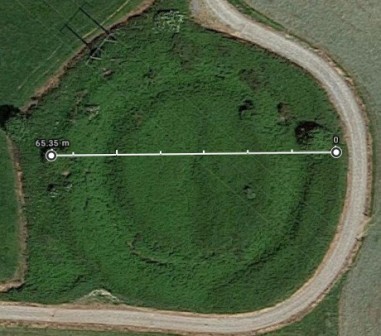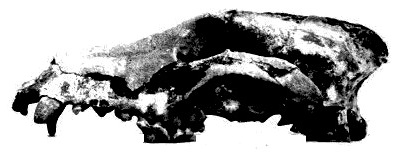Local Ringforts & Caves
General overview

The countryside of Ireland is festooned with ancient monuments. Carrigtwohill and surrounding areas has its share of
these structures which include ringforts and caves with subterranean chambers. The largest by far is at Woodstock, approximately
measuring 65.35 metre in diameter.
The first recorded mention of these caves was made by Charles Smith within his publication 'Natural and Civil History of Cork',
Vol I, P160-161, for the section of his passage describing the village:
"Near this place, to the N. E. is a large cavity, running under a rock, for a conciderable way in the earth."
Samuel Lewis in his topographical survey of 1837 mention the chambers:
“In various parts of the parish are the caverns which penetrate for a considerable distance into the limestone rocks,
and some of them are very large and beautiful stalactites.”
Charles Bernard Gibson’s, 'The History of the County and City of Cork', 1861, goes further when referring to Carrigtwohill:
“Carrigtohill, or Carrigtoille, means “a carved rock,” from carrig, a rock, and toille, a cave. The limestone rock
abounds here.”
Surveyed Caves & Subterranean chambers
Garranes Farm
 Archaeologia, vol. XXII,
Archaeologia, vol. XXII,
Figure 1
The earliest known survey was conducted by historian and antiquarian, Thomas Crofton Croker with his partner Robert
O’Callaghan Newenman, who reportered to the Society of Antiquities of London, 15th December 1829, his findings
of a series of subterranean chambers within one of the ringforts on the lands of Mr. Cummins at Garranes, measuring 120
ft in diameter (36 mtrs); subsequently published in their Archaeologia, vol. XXII, 1831. These were located in what
Folklore referred to as “Danish Forts”; yet such forts are to be found where the Danes had never settled. It
has not been established how old our ringforts may be.
Croker mention a cluster of five “circular entrenchments or forts” he had visited while on Mr Cummins’
farm. However, local knowledge advises that there are only four surviving to be found on the Townland of Garranes.
This is further reinforced by the valuation maps of 1840s.
Croker states that within five miles there are at least fourteen such “circular entrenchments or forts”. He further
tells us how tradition regard them as haunted places inhabited by “good people” or “Fairies”, a tradition that still survives to this day.
Figures 1 & 2 are edited extracts of Thomas Crofton Croker's illustrations for ease of reading. Figure 1 clearly shows
these chambers within one of Carrigtwohill’s ringforts at Garranes, but which one it was is not known. Figure 2 is his
sectional view.
 Archaeologia, vol. XXII, Figure 2
Archaeologia, vol. XXII, Figure 2
We have created a copy of full report which may be read by clicking link.
Chambers of Terrysland

A little over a century later it was the turn of C J Coleman to publish his report in the Naturalist Journal of 1945
his survey findings a series of chamber discovered, December 1933, in Terrysland by Messrs; M Murphy and J Cotter,
C Marchant and himself.
As a footnote to his opening passage he makes the following observation;
“The cave is in the Rock, north-east of Carrigtwohill village, in Terrysland townland, and is located on O. S. 6 inch
(Cork) sheet 76, 4.9 ins. from top margin and .9 ins. left margin of sheet. A general description of the cave (with
plan and illustrations) is given in Jour. Cork Hist. and Arch. Soc. XXXIV, 76-78.”
During the initial survey of 1933/4 a large skull of a dog or wolf was found embedded in stalagmite on a rock ledge
named the “Dog Kennel”, and was later to be housed at the Dublin National Museum.

The Excavation of theses chambers began in February 1944 under licence of the Commissioners of Public Works. It revealed
a chamber of Stalagmite floor, varying in diameter between 2” & 10” (50 - 254 mm), sitting on a bed of tufa and red-brown
clay and limestone blocks, with recent faunal, or animal remains also being found; the full list of which may be read
within Coleman’s report. A few trial pits
dug within the cave, but no finds were made. The assumption was the animal remains were brought in by foxes.